A Dodge Neon Hit 200 Miles Per Hour at the Texas Mile
If you have ever attended a Texas Mile racing event, you know that Dodge models are well represented. The Texas Mile falls between quarter-mile drag racing and all-out top speed events like those held at the Bonneville Salt Flats; and as you might have guessed from the name, competitors have a mile to see how fast they can get moving. The likes of the Dodge Challenger and Charger SRT® Hellcat models are common here, as drivers have a chance to really let all of that supercharged HEMI® engine power work its magic on a long stretch of pavement. In addition to Challengers and Chargers, the other popular V8 performance cars from Ford and Chevy are joined by vehicles like the Nissan GTR and European exotics, with the ultimate goal for many to break the 200 mile per hour barrier in that mile stretch.
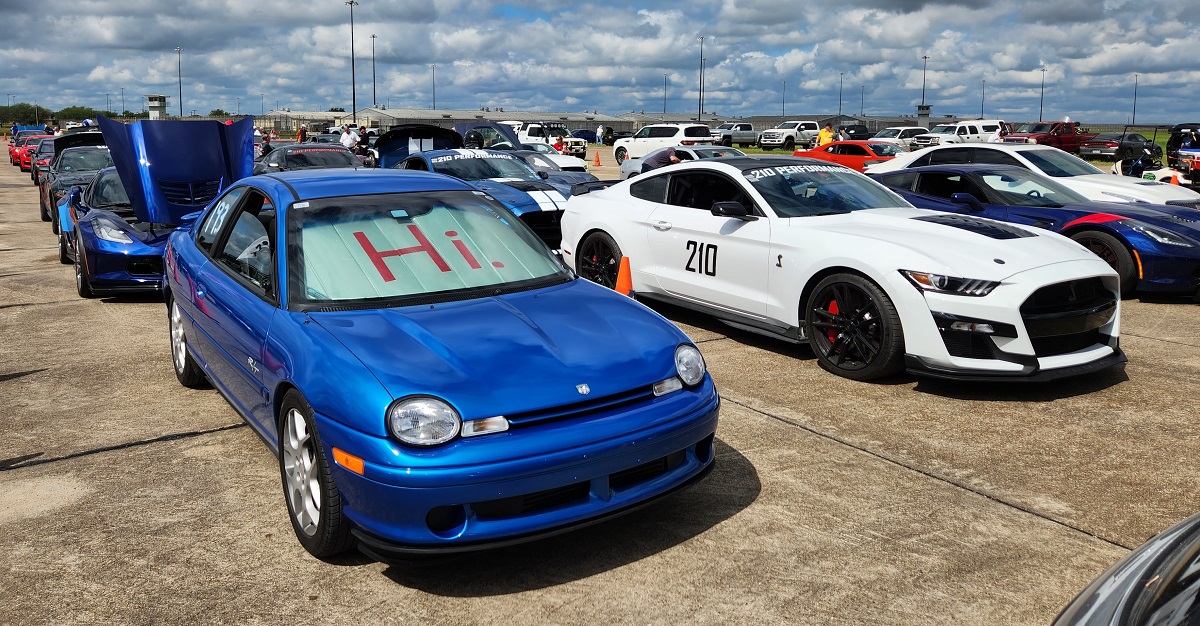
While V8-powered muscle cars and foreign supercars are common at the Texas Mile, four-cylinder, front-wheel-drive vehicles are very rare. In fact, there were only a handful of front-drive vehicles at the October 2023 Texas Mile event, but one of them – a 1998 Dodge Neon driven by Malcolm Ward – surpassed the 200 mph mark and he did it with Dodge power.
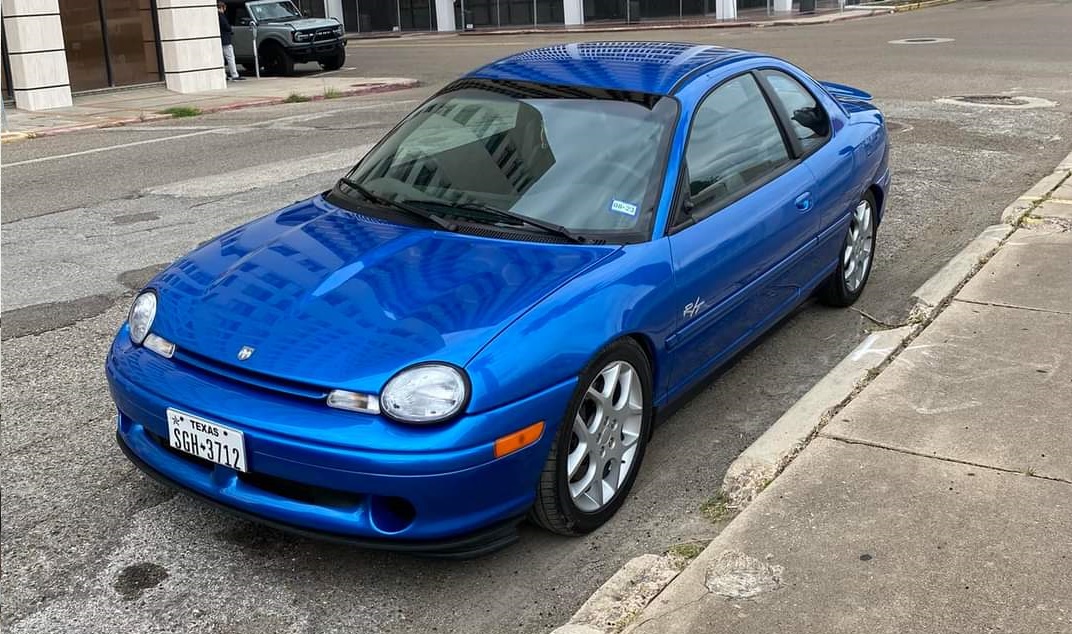
You read that right. A 1998 Dodge Neon went over 200 miles per hour at the Texas Mile. That is pretty impressive, but what makes Ward’s feat truly amazing is that this isn’t a purpose-built racecar. He drives this car on the street with air conditioning and a custom sound system, but in addition to being a comfortable daily driver, it is capable of running with some of the fastest street cars in the world at the Texas Mile. For comparison, a stock Dodge Challenger SRT Hellcat is capable of running in the 160-170 mph range, so Malcolm Ward’s SRT-powered Neon is substantially faster than the stock modern muscle cars.

Upon reading about this 1998 Dodge Neon on the Texas Mile Facebook page, we reached out to Malcolm Ward for more information on his incredible achievement and as you will read below, this car just becomes more impressive as you learn more about it.
Before getting into the details of how Malcolm Ward went over 200 miles per hour in a Dodge Neon, we asked him why he chose a first-generation Dodge Neon to use for the Texas Mile.
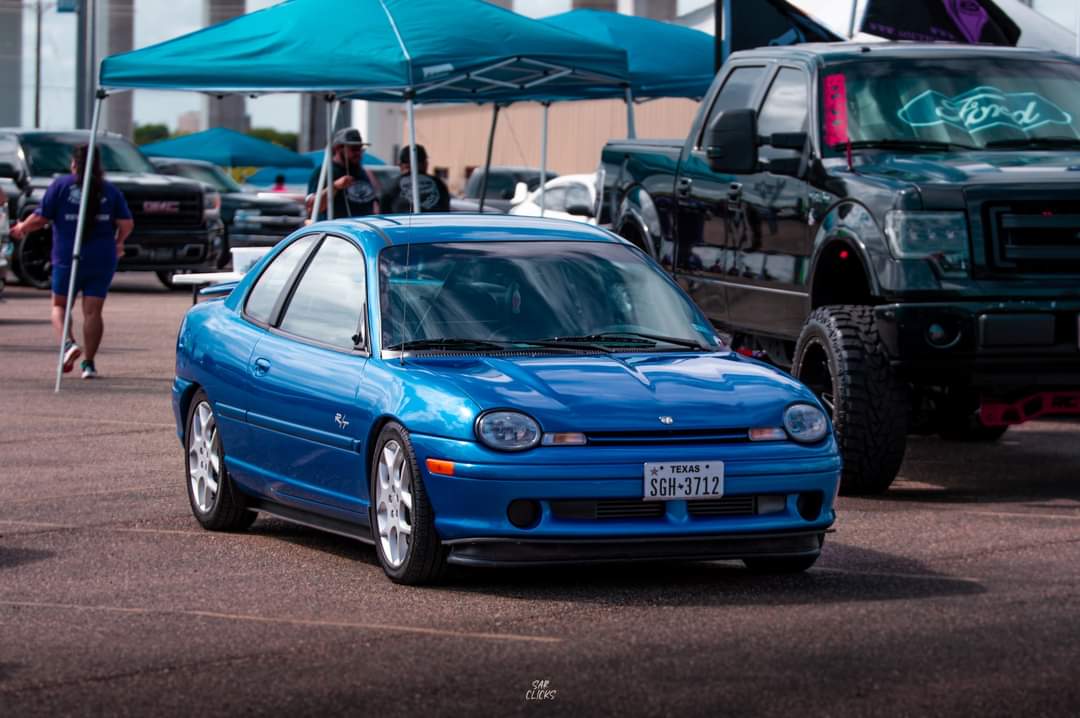
“I’ve had Neons now since 1997, when I bought my first. I moved back to my hometown in 1995 to raise my family and needed an affordable economy car to make my 30-mile drive to work. I had been commuting in a 440-powered ’72 Dodge Coronet Wagon (below) that also served as an occasional bracket racer. At best, I could maybe get 15 mpg highway. The Neon was a fun car to drive but I always wished it had more power.
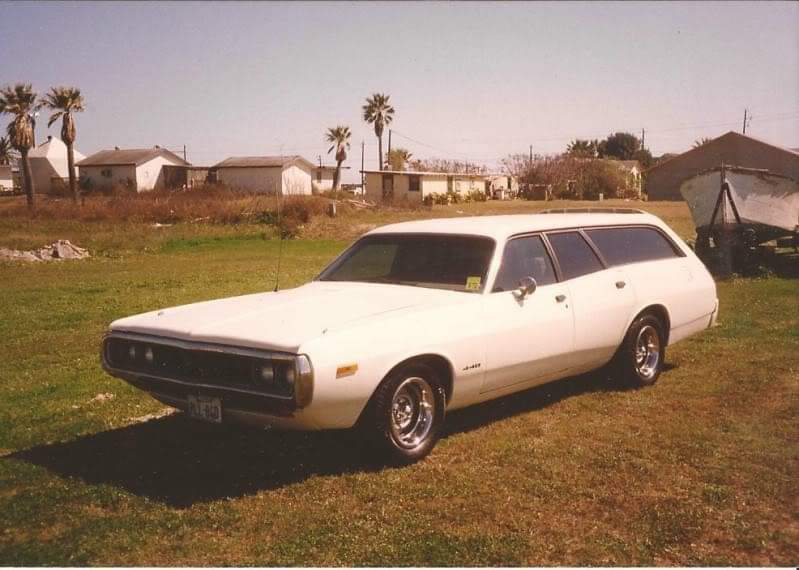
“That first neon treated me well mechanically but started having rust issues. I live on Mustang Island about a quarter-mile from the Gulf of Mexico and back then the Neon had to be parked outside. The salty air from the Gulf does terrible things to a car. When the doors were about to fall off, I decided to look for a replacement.
“I bought my second Dodge Neon from a used car lot in 2005. It was rust-free and low miles. It too had to spend some time outdoors until I ended up divorced. My divorce freed up some garage space so I could finally get my car inside. That second Neon became my white Texas Mile car. Through the years, I’ve parted out a few SRT4s and first-gen Neons. I have a storage shed full of Neon parts.”
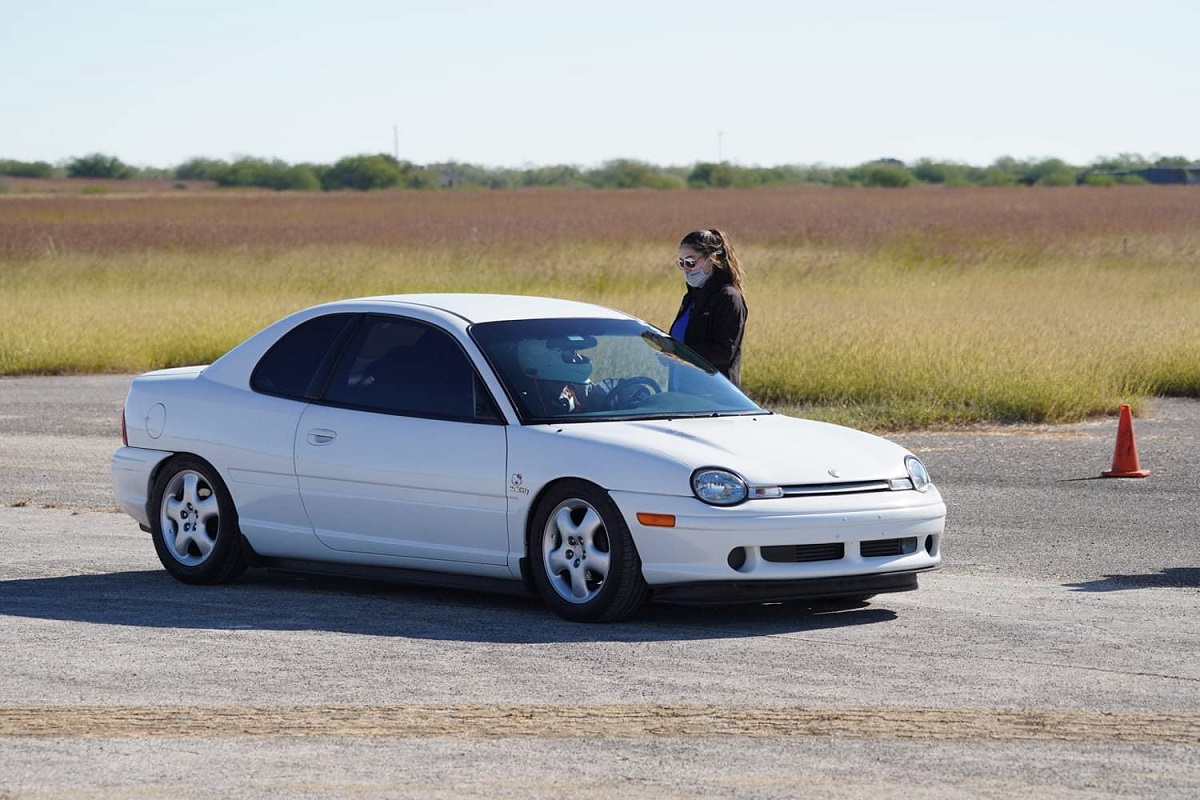
Malcolm Ward’s white 1998 Dodge Neon was upgraded with an engine and transmission from a 2004 Neon SRT-4 with the components of the Mopar® Performance Stage 3 package. Like the modern-day Direct Connection stage kits, Mopar Performance offered power upgrade packages for the SRT-4 Neon, and while they were well out of production by the time that Ward built his 1998 Neon, he was able to find all of the components to recreate the package.
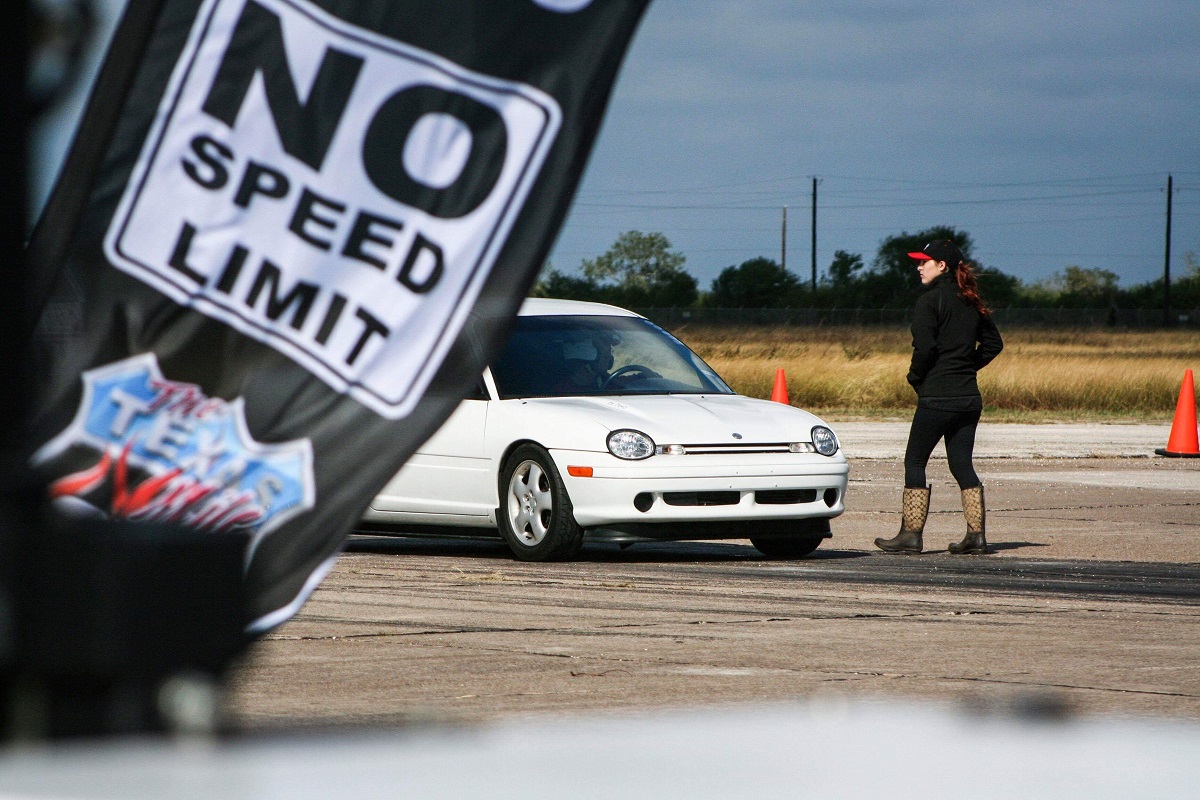
With the Stage 3 package, the Neon SRT-4 engine offered 355 horsepower on 100+ octane fuel, and with continued tuning work by J.D. Nash of High PSI Performance in Harker Heights, Texas, Ward’s Neon got up to 425 wheel horsepower on VP MS109 racing fuel. With that output, he was able to get up to 179 miles per hour in the mile, but he wanted to go faster and he was already pushing the limits of the stock bottom end. To go faster, he needed more boost and to handle more boost, he needed a stronger engine, so he began building a second engine with stronger bottom end parts.
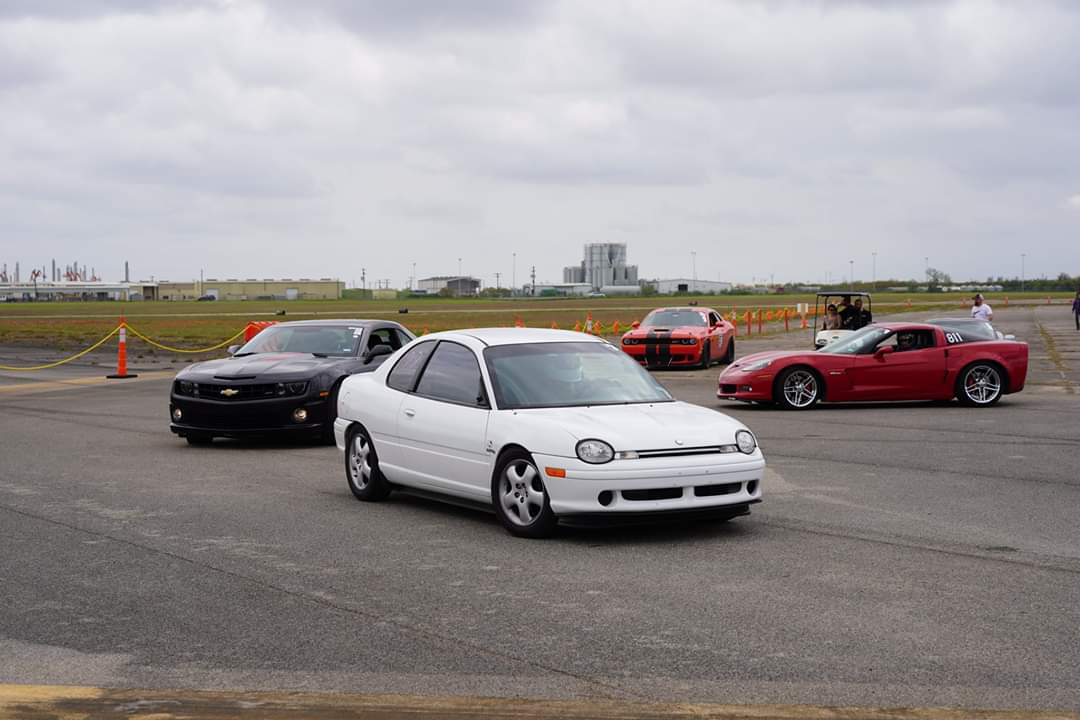
That new engine went into Malcolm’s white Dodge Neon in 2019, making 560 wheel horsepower on MS109, allowing him to get into the low 190 range. At that point, J.D. Nash suggested switching to E85 and when they did so, the output of the new engine in the white Neon climbed to 640 wheel horsepower. Ward had hoped that this extra power would push him over 200, but on the next trip to the Texas Mile, he blew a head gasket in the middle of the run and damaged the engine. After speaking with Neon racing legend Darrell Cox about his engine failure, Ward rebuilt his engine with stronger head studs, a bigger turbocharger and hotter camshafts, but that time, the engine went into a different car.
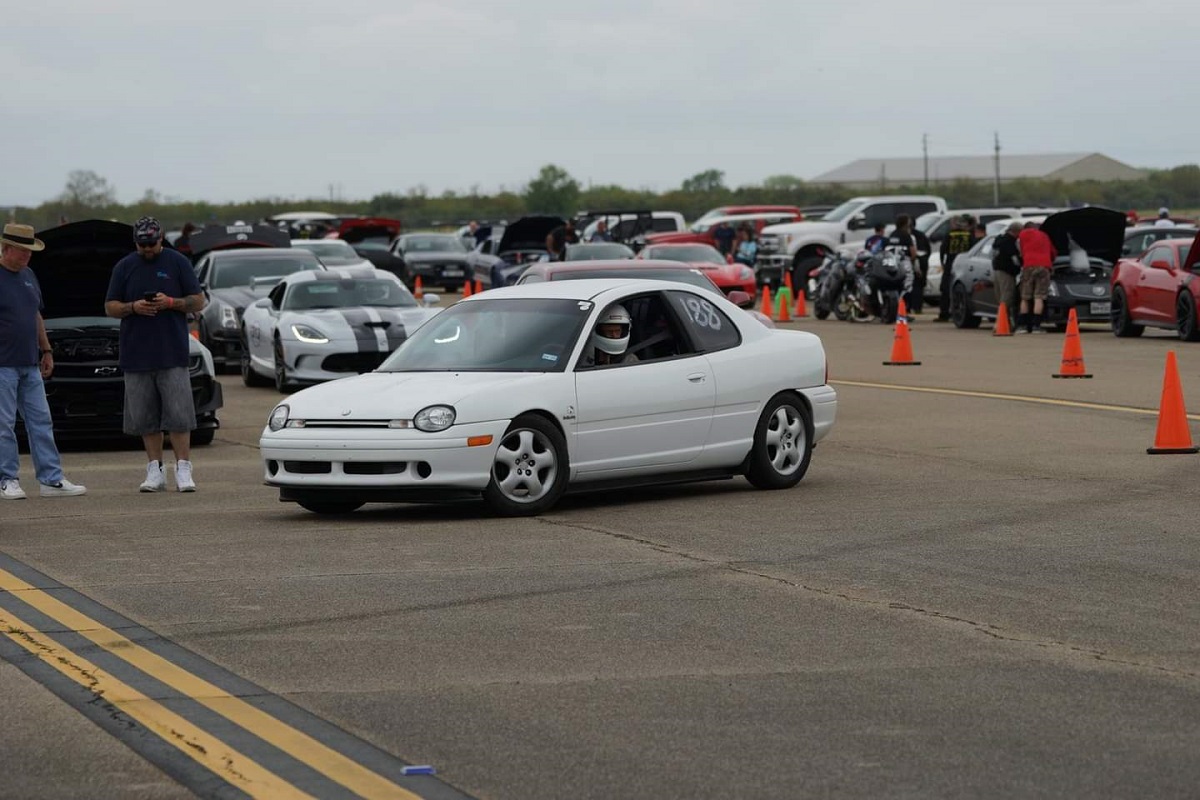
“My stepson bought the blue Dodge Neon around 10 or 11 years ago. At the time, it was the best-preserved first-gen Neon I had ever seen. He was in the Coast Guard and the car moved with him from place to place. During that time, it stayed outside at different apartments complexes. He needed to sell it, so he towed it from Virginia to my house in Texas to have me look it over and help him get it sold. I was amazed at how nice the car was after all the time it spent outdoors. I made the decision to buy it for myself and make it my Texas Mile car. I swapped all my SRT and aftermarket parts from the white Neon to the blue one.”
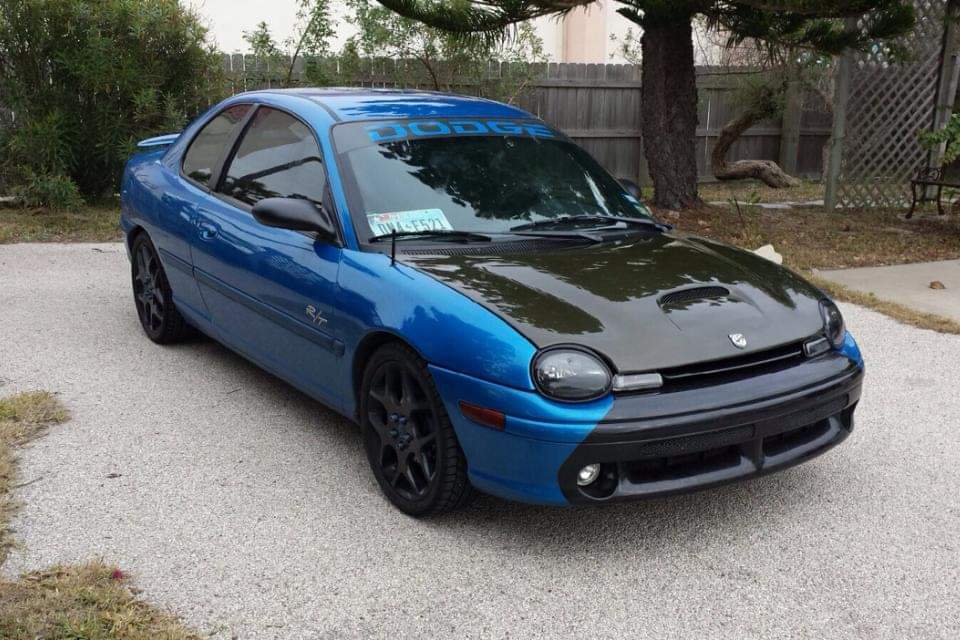
When Malcolm Ward bought the car from his stepson, it had a carbon fiber hood, but he didn’t care for that, so he swapped back to the factory look.
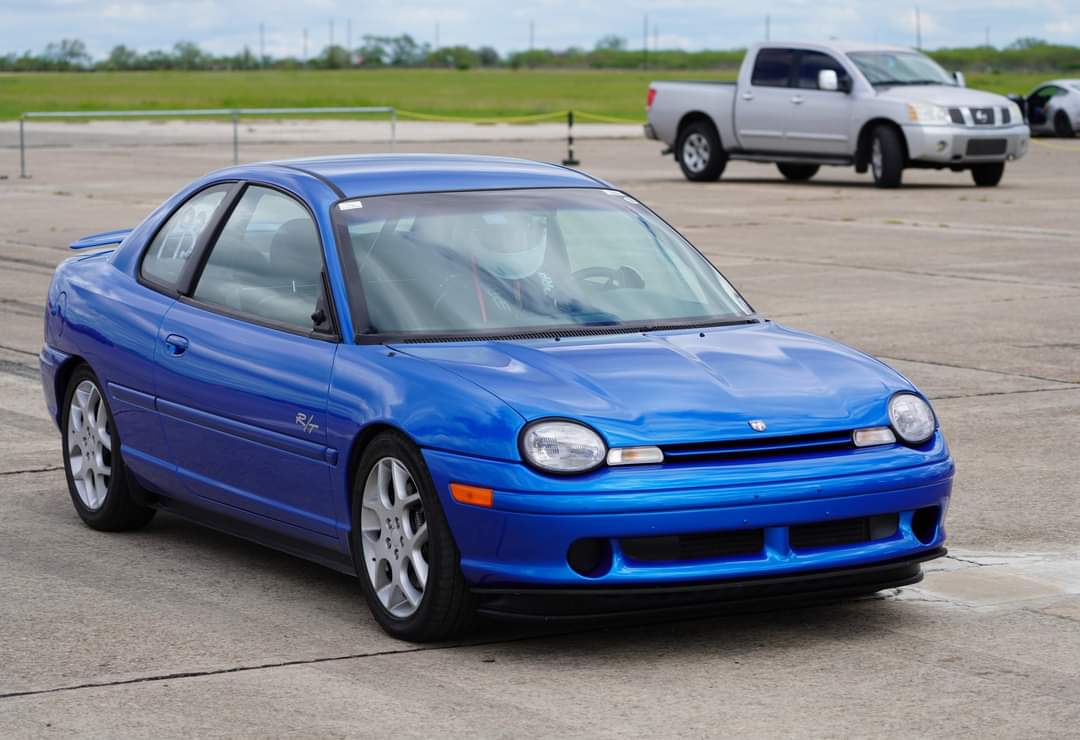
That engine, tuned for VP C85 race fuel, made 695 wheel horsepower and that output allowed Malcolm Ward to eclipse the 200 mile per hour mark at the Texas Mile.
So, what exactly goes into building an engine strong enough to get a first-generation Dodge Neon going 200 in a mile? Well, the basis of the engine is a factory Dodge Neon SRT-4 (that is a second-gen car, for those of you who aren’t familiar with Neon lineage) engine block and crankshaft with Pauter connecting rods and JE pistons. That block is topped by a factory cylinder head that has been ported by Indy Cylinder Heads and fitted with oversized REV valves, Crane number 16 camshafts and beehive springs from DCR. The 62/62 turbocharger and exhaust manifold are from AGP Turbo, providing the boost needed to make around 700 horsepower at the front wheels with tuning by J.D. Nash of High PSI Performance in Harker Heights, Texas.
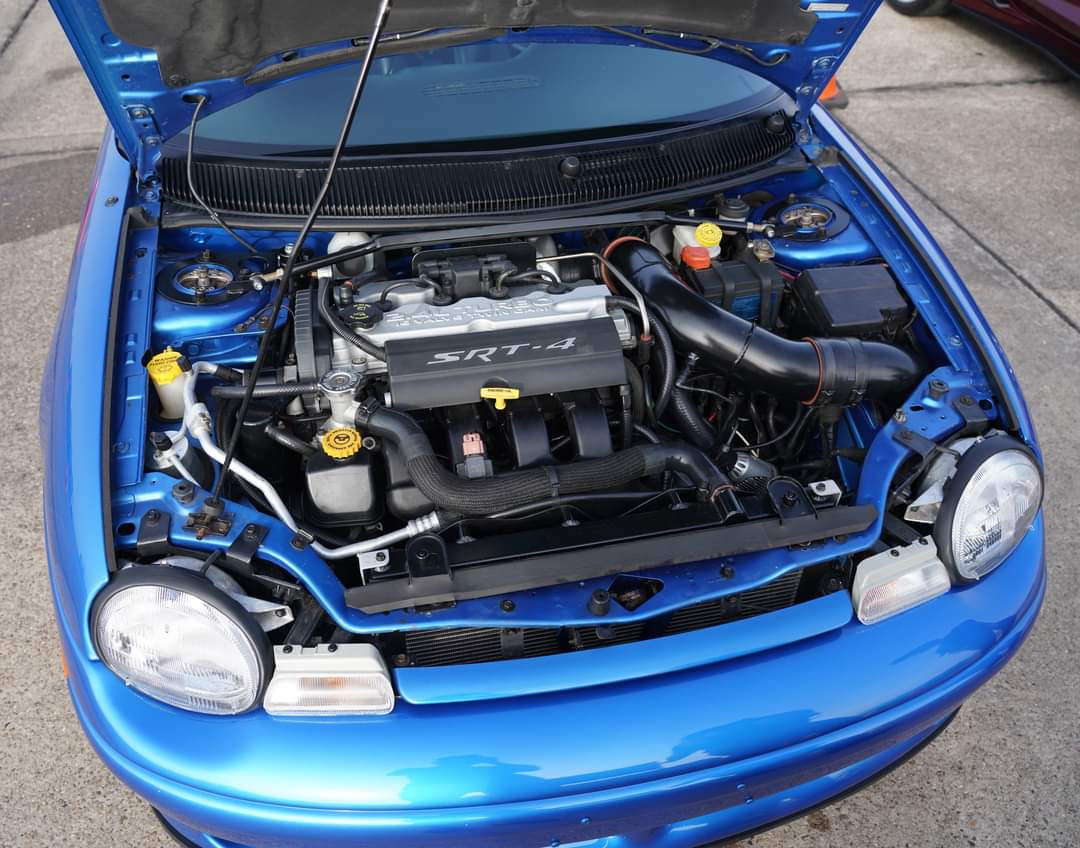
To make proper use of that power, Ward sent the factory SRT-4 transmission to Performance Autowerks to be built to handle up to 750 horsepower. A twin-disc clutch rated for 800 horsepower and Driveshaft Shop axles work with that built gearbox to put all of the power to the ground. Ward points out that on hard pulls at the Texas Mile, he can’t really use full power and have good traction until 4th gear.
Next, to improve high-speed handling, Malcolm Ward added BC adjustable coilover suspension, Suspension Techniques sway bars and firmer Prothane bushings; and to slow his Neon down from 200 miles per hour, he has added a 6-piston brake setup with huge rotors up front. He is still running the stock rear brakes.
“People ask me all the time how my Neon handles at the speeds I’ve gone. The truth is it seems to handle just fine. It’s a bumpy ride but the car wants to go straight and it feels firmly planted to the ground,” said Ward.
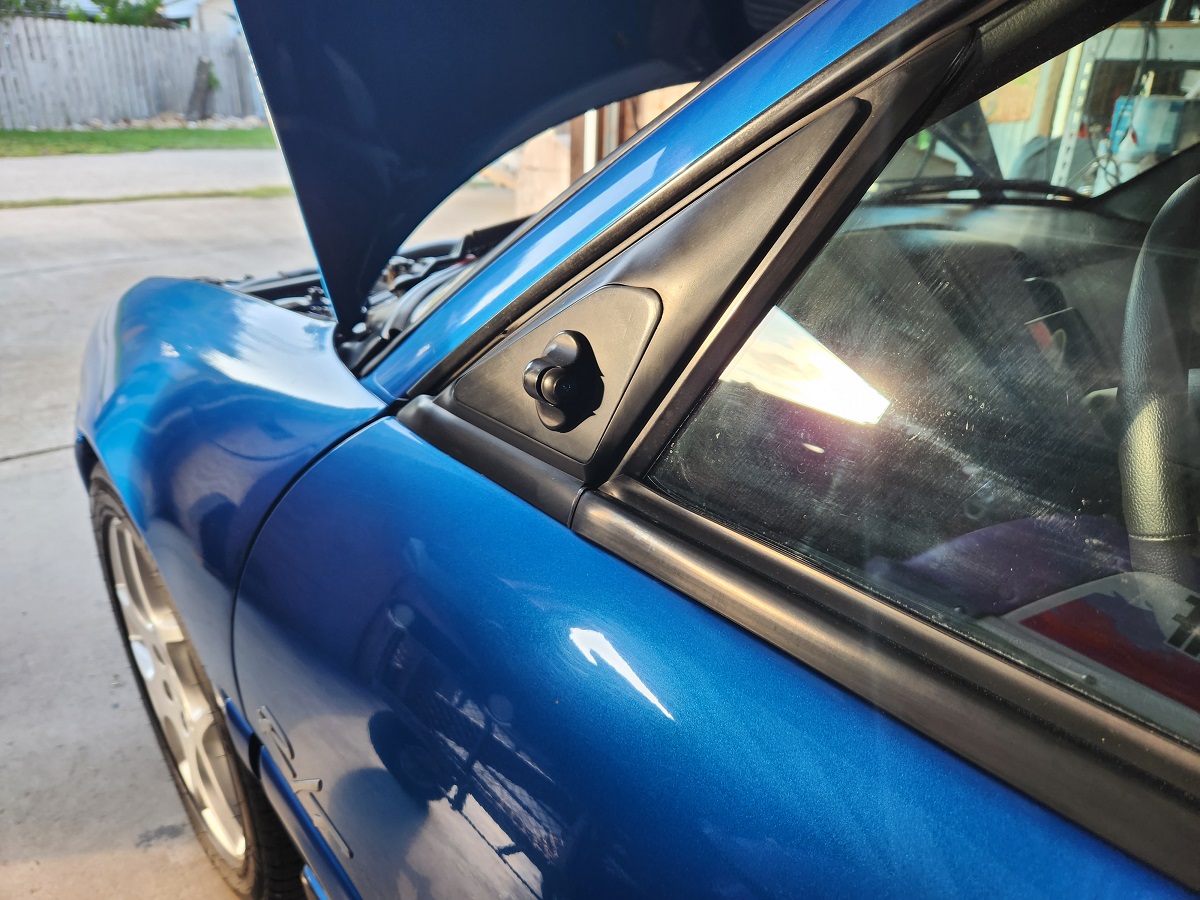
The final piece of the puzzle for Malcolm Ward going over 200 miles per hour in a mile with his 1998 Dodge Neon is aerodynamic upgrades. Since no one else has attempted this type of automotive feat with a first-generation Neon, Ward had to make pretty much everything needed to improve the way that his car cuts through the air at 200. He started by replacing the exterior mirrors with tiny camera housings, followed by using weather stripping, roll bar padding and pipe insulation to block off unwanted air flow around the intercooler, air condition condenser and radiator. Other holes and random air passages around the front end were blocked using pieces of a Rubbermaid trash can and PVC piping.
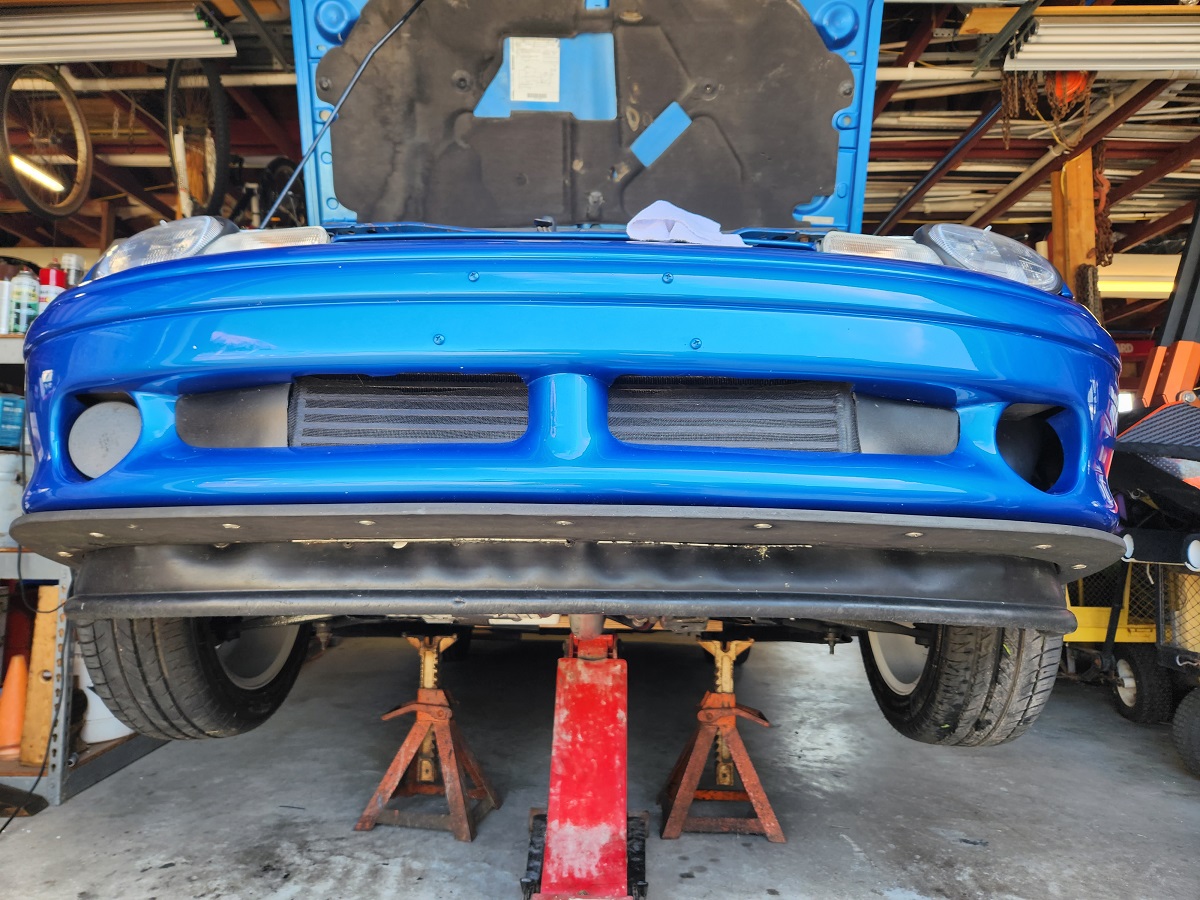
Another key issue was preventing the flow of air under the Dodge Neon at high speed, and that was where he really got inventive.
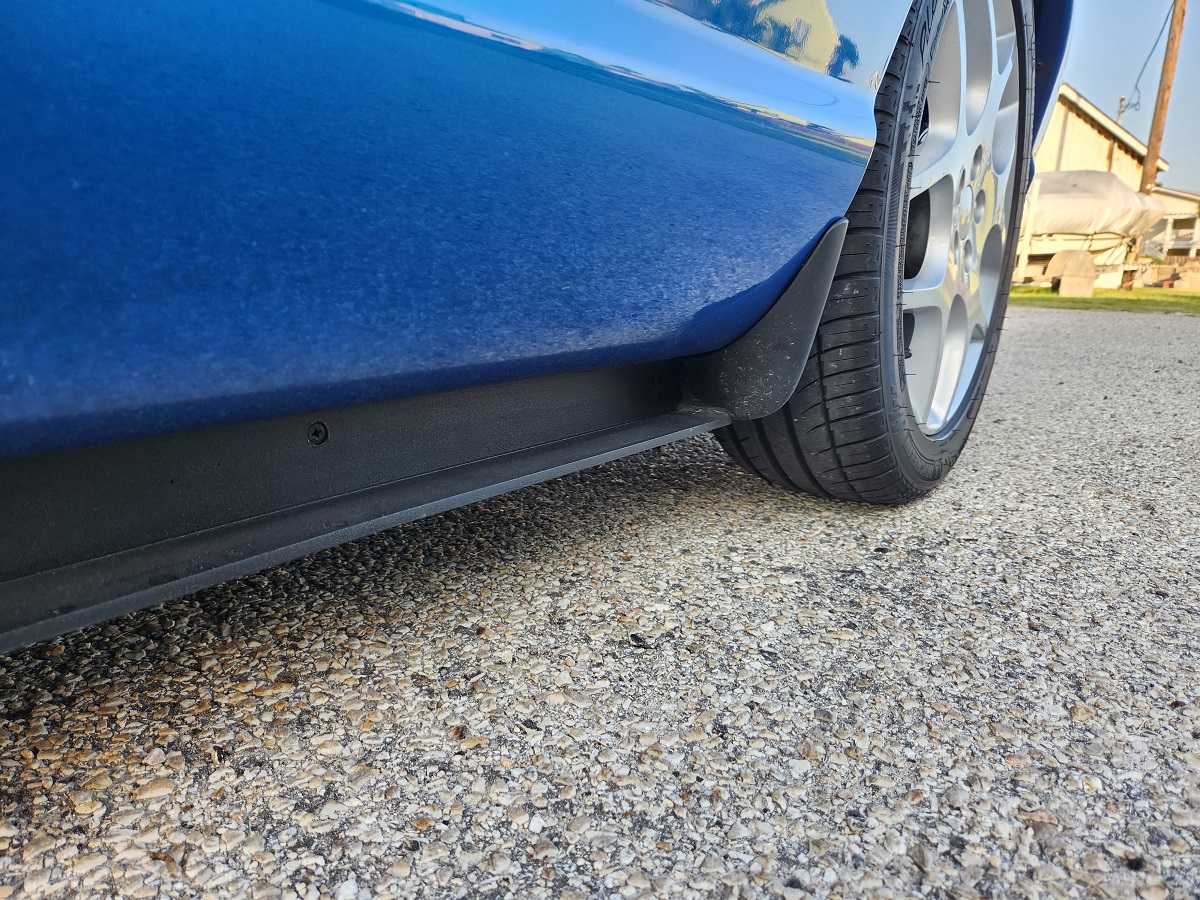
“Below the front fascia, I used garden edging to keep air from getting under the car and along the sides of the car I used a combination of garden edging, 2×2 plastic angle I sourced from a local plastic supply house and some O.E.M. rock guards behind the front tires and ahead of the rear tires.
“In the rear of the car, I made a diffuser from a sheet of aluminum that I salvaged from an old sign. The diffuser covers the muffler and rear suspension components. The car is lowered as low as I can get it to reduce drag and still be streetable.”
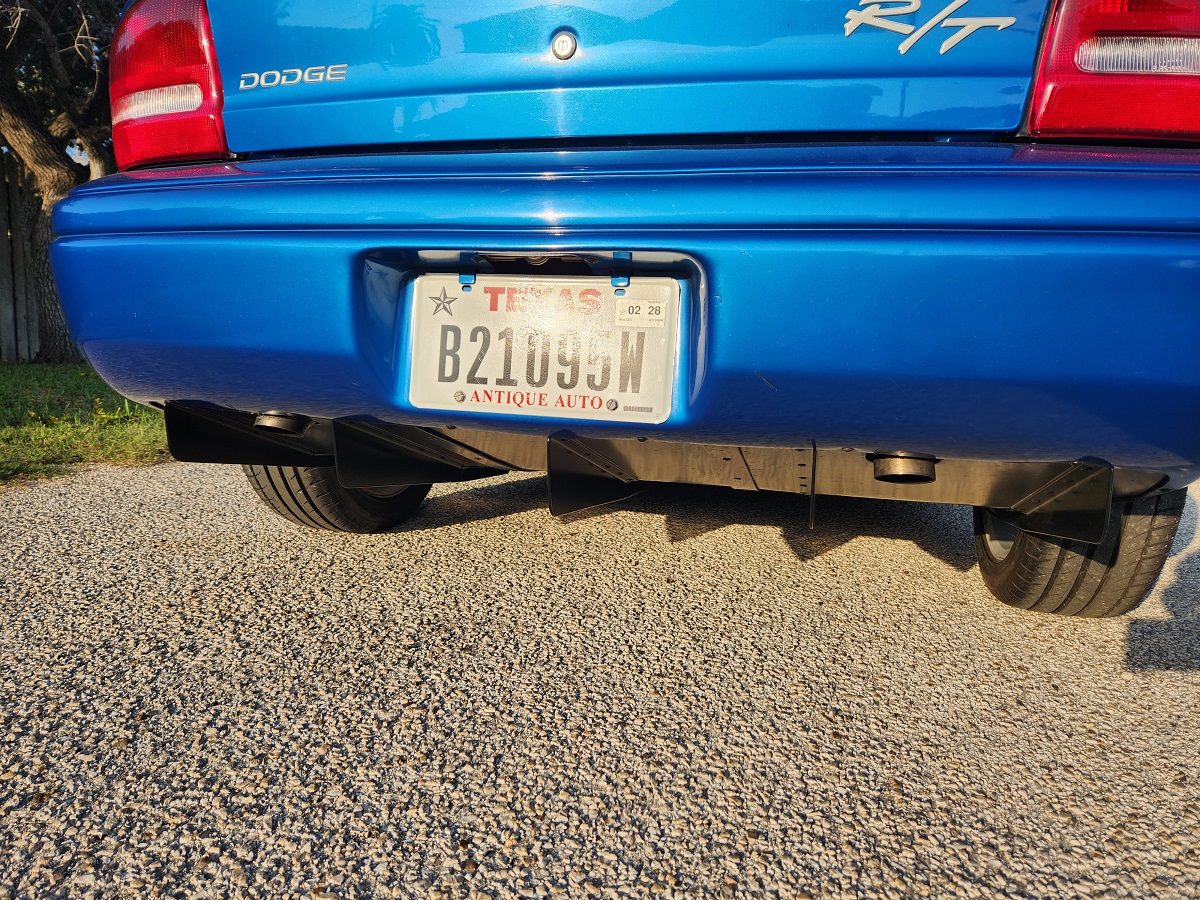
To look at his car sitting still, you might mistake it for a very clean early Dodge Neon with a set of SRT-4 wheels, but in reality, Malcolm Ward has built a monster street car that will outrun most stock modern performance cars at the Texas Mile.

“My Neon is definitely a low buck approach to the Texas Mile. I finished up on my new blue Neon about a year ago. I enjoy driving it. I’ve taken it on quite a few road trips. The seats are comfortable, the A/C is cold. I added around 30 lbs of Dynamat to the doors, floors and roof to make it quiet. I also put a great sound system into it. My goal with my Neons wasn’t to build a racecar or even a sleeper, although it definitely fits the definition. My goal was to make myself something fun to drive.”
He has certainly achieved his goal of building something that is fun to drive and in doing so, he has built one of the fastest Dodge Neons in the world.
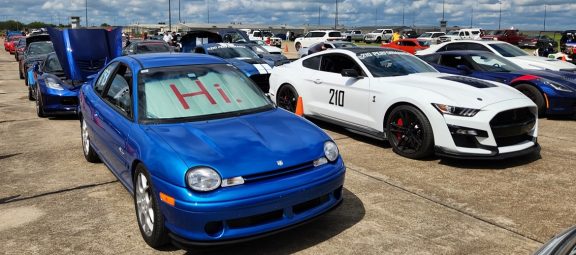
0 Comments